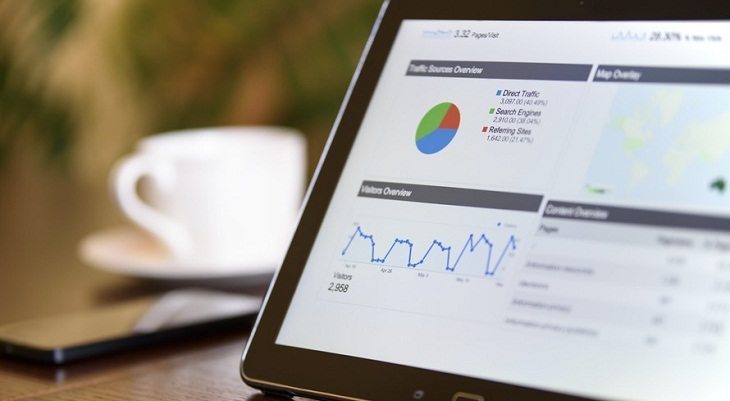Just because your business is doing well on social media doesn’t mean you should ignore your website’s performance, or rely on likes and shares for revenue. According to Gallup’s 2014 State of the American Consumer study, consumers look to social media for personal connections and conversations, not sales pitches. Having your own website is still a top choice if you want to remain in control of your business and appear professional in your field.
Here’s where search engine optimization (SEO) comes in. Contrary to what some may believe, SEO is not dead; however, it has changed with the times. Gone are tactics of keyword stuffing and link-building. Enter more sustainable techniques such as long-tail keywords and a focus on geographical location.
When done right, modern SEO strategies can help businesses tap into the 70 percent of U.S. households that are doing their shopping online.
Not many people know how to correctly harness this power in their business websites. Even experts sometimes make the mistake of overlooking these small details. Need a boost for an upcoming sale or product introduction? Correct these often overlooked SEO strategies and see better visibility for your website. After all, more eyeballs mean more chances of getting leads.
Improving site speed
Put yourself in your customers’ shoes. You find the perfect product, and you’re almost ready to buy. But the site takes forever to load. Whether you’re on mobile or desktop, there’s nothing more annoying than having to waste precious seconds, especially if another website is offering the same item. The customer jumps, and you just lost a sale.
Constantly monitoring and improving your website speed should be a priority. For every second of delay, you’re actually:
- Losing seven percent in conversions
- Down by about 11 percent in page views (less eyeballs)
- Compromising on customer satisfaction by as much as 16 percent
Even search engine giant Google recognizes the importance of speed. Use online tools like Google’s Page Speed Test or Pingdom Website Speed Test to know how you compare to your competitors. The faster your site speed, the further your business could go.
Related: The Startup’s Guide to an SEO Audit
Fixing broken links or redirects
Broken links are bad for business, no matter how you look at it. This is in conjunction with my first point. If you have several 404 errors, not only will customers hate coming to your site, you will also experience slower page speeds. Links done right will add value for site visitors, ease site navigation and improve ranking of important pages.
Whether you’re linking internally or to outside sources, make sure that they’re working as intended. Experts suggest having the link open to a new window or tab. This helps online users who are not done scanning your content stay on that page, while exploring other offers.
Ignoring no-follow links
Even if you’re not a specialist, you probably know that no-follow links are not valued in SEO. That’s because a no-follow tag (rel=”nofollow”) is basically telling search engine crawlers to “ignore” a link. This means no-follow links don’t carry the same link juice as do follow links.
Even though Google doesn’t confirm this, there is evidence to suggest that no-follow links carry weight, but not in the way you think. Digital marketing strategist and entrepreneur, Pratik Dholakiya, explains how no-follow links can still boost your rankings through:
- An endorsement from the website that contains your link (the author or webmaster wouldn’t put it there unless they thought it was relevant)
- Referral traffic from people who will click on your link (a link is a link: and users who are curious will click on it regardless)
- Link visibility, which could lead to more websites linking to you (if they find your content useful)
Just because you’ve got a no-follow link doesn’t mean you should be disheartened. Instead, use it as an opportunity to improve your SEO strategies, and build meaningful connections with your site visitors.
Not using natural language in content
Are you still using jargon in your website copy? You might want to rethink that strategy. Although keywords are still important, search engines like Google are prioritizing natural language over business or industry-specific jargon. According to Oracle, these “natural language queries” are made up of “normal terms in the user’s language, without any special syntax or format.”
For example:
Instead of saying, “we offer value-based software that integrates all channels of communication to ensure your organization meets its desired goals promptly,” try “our special software was designed with your business goals in mind. Together, we can strengthen the flow of communication across every level in your company.” The latter sounds more natural, and can be easily understood by most users (which is exactly what Google loves).
When sprinkling keywords into your web content, be sure to add natural language queries by:
- Including answers to problems your target market are likely to ask
- Adding variety to your anchor texts using long-tail phrases
- Avoiding jargon altogether
You don’t need to impress people with showy words. Opt to be genuine, sincere and honest instead.
Related: Sign up to receive the StartupNation newsletter!
Optimizing other onsite elements
SEO strategies need to extend to onsite elements such as images and other multimedia (including video, sounds, slideshows, etc.). This ensures maximum visibility for your target consumers. If people are looking for relevant images or video, for example, they will be directed to your content, as long as those elements were optimized properly.
For photos, make sure that you provide unique, descriptive alt tags so both users and search engines can easily find your image. For videos, upload them to your own site instead of simply embedding. Use an MP4 format so it loads seamlessly on most multimedia players (even mobile!).
What if your business is on third party e-commerce websites?
If your budget doesn’t allow you to have your own website just yet, don’t worry. Simply check the e-commerce site that you want to invest in at the moment to see if it it would provide enough visibility for your brand.
Shopify, for example, is one of the best e-commerce sites for both budding and long-time business owners. Aside from providing customer support and great user experience, the platform has a whole host of features to choose from (including SEO).
However, don’t forget that this is only temporary. In the long run, you’re still going to need your own site with your own SEO strategies, especially if you want to truly establish a strong, authoritative presence on the web.
Maximize the web today
The great thing about these SEO strategies is that they’re sustainable.
Unlike PPC ads outcome (which stops the minute you stop the campaign), SEO is meant to provide results long after the project is over. Just because these details are small doesn’t mean you shouldn’t correct them. After all, small things become big over time.






